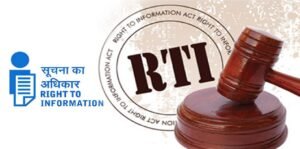Corporate Compliance and Risk Management in India
Table of Contents
- Introduction
- Understanding Corporate Compliance
- Risk Management: An Overview
- Key Components of Corporate Compliance and Risk Management
- Challenges in Corporate Compliance and Risk Management
- Best Practices for Effective Compliance and Risk Management
- Case Studies
- Conclusion
Introduction
In the increasingly complex and regulated business environment of India, corporate compliance and risk management have become paramount. Companies must navigate a maze of regulations, policies, and standards to ensure legal conformity and mitigate risks that could affect their operations and reputation. This article delves into the critical aspects of corporate compliance and risk management in India, exploring the legal framework, key challenges, and best practices for effective management.
Understanding Corporate Compliance
Definition and Importance
Corporate compliance refers to the adherence of a company to laws, regulations, standards, and ethical practices relevant to its operations. It is essential for several reasons:
- Legal Protection: Ensures that companies operate within the boundaries of the law, protecting them from legal penalties and litigation.
- Reputation Management: Builds trust with stakeholders, including customers, investors, and regulators.
- Operational Efficiency: Promotes efficient and standardized processes across the organization.
- Risk Mitigation: Identifies and mitigates potential risks before they become critical issues.
Legal Framework in India
India’s corporate compliance landscape is governed by various laws and regulations, including:
- Companies Act, 2013: Governs corporate governance and compliance, including the roles and responsibilities of directors, financial reporting, and audit requirements.
- Securities and Exchange Board of India (SEBI) Regulations: Includes Listing Obligations and Disclosure Requirements (LODR), Insider Trading Regulations, and Takeover Regulations.
- Foreign Exchange Management Act (FEMA): Regulates foreign exchange transactions and investments in India.
- Income Tax Act, 1961: Covers tax compliance requirements for companies operating in India.
- Goods and Services Tax (GST): Regulates indirect tax compliance.
- Labour Laws: Includes laws related to employee rights, benefits, and workplace safety, such as the Industrial Disputes Act and the Employees’ Provident Funds Act.
- Environmental Laws: Includes the Environment Protection Act and other regulations aimed at controlling pollution and protecting the environment.
Risk Management: An Overview
Definition and Importance
Risk management involves identifying, assessing, and prioritizing risks followed by coordinated efforts to minimize, monitor, and control the probability or impact of unforeseen events. Effective risk management is crucial for:
- Business Continuity: Ensures that businesses can withstand and recover from disruptive events.
- Financial Stability: Protects the financial health of the organization by mitigating potential losses.
- Strategic Planning: Helps in making informed decisions and setting realistic goals.
- Regulatory Compliance: Ensures adherence to laws and regulations, avoiding penalties and legal issues.
Types of Risks
Corporate risks can be categorized into several types:
- Operational Risks: Risks arising from day-to-day operations, including process failures, system breakdowns, and human errors.
- Financial Risks: Includes market risks, credit risks, and liquidity risks that can impact the financial stability of the organization.
- Compliance Risks: Risks of legal or regulatory sanctions, financial loss, or damage to reputation due to non-compliance with laws and regulations.
- Strategic Risks: Risks arising from poor strategic decisions, including market changes, competition, and innovation challenges.
- Reputational Risks: Risks that can harm the company’s reputation and stakeholder trust.
Key Components of Corporate Compliance and Risk Management
Corporate Governance
Corporate governance refers to the system of rules, practices, and processes by which a company is directed and controlled. Effective governance ensures accountability, fairness, and transparency in a company’s relationship with its stakeholders. Key elements include:
- Board of Directors: Oversight and strategic direction.
- Audit Committee: Ensures integrity of financial reporting.
- Compliance Officer: Monitors adherence to laws and regulations.
- Ethical Policies: Promotes a culture of integrity and ethical behavior.
Compliance Programs
A robust compliance program is essential for ensuring adherence to legal and regulatory requirements. Key components include:
- Compliance Policies: Clear and comprehensive policies outlining compliance requirements.
- Training and Awareness: Regular training programs to educate employees about compliance issues.
- Monitoring and Auditing: Regular audits and monitoring to ensure compliance.
- Reporting Mechanisms: Confidential reporting channels for whistleblowers to report violations.
- Disciplinary Actions: Fair and consistent disciplinary measures for non-compliance.
Risk Assessment and Management
Effective risk management involves:
- Risk Identification: Identifying potential risks through risk assessments and audits.
- Risk Analysis: Analyzing the likelihood and impact of identified risks.
- Risk Mitigation: Implementing measures to mitigate risks, including internal controls and contingency planning.
- Risk Monitoring: Continuous monitoring of risks and effectiveness of mitigation measures.
- Crisis Management: Preparing for and managing crises through crisis management plans and response teams.
Challenges in Corporate Compliance and Risk Management
Regulatory Complexity
The regulatory environment in India is complex and constantly evolving. Companies must stay updated with the latest regulations and ensure compliance, which can be challenging and resource-intensive.
Integration Across Functions
Integrating compliance and risk management across various functions and departments within an organization can be difficult. It requires a coordinated approach and effective communication.
Resource Constraints
Small and medium-sized enterprises (SMEs) often face resource constraints, making it difficult to implement comprehensive compliance and risk management programs.
Technology and Cybersecurity
With the increasing reliance on technology, cybersecurity risks have become a significant concern. Companies must invest in robust cybersecurity measures to protect against data breaches and cyberattacks.
Best Practices for Effective Compliance and Risk Management
Strong Leadership and Governance
Leadership commitment is crucial for fostering a culture of compliance and risk management. The board of directors and senior management should set the tone at the top and lead by example.
Comprehensive Policies and Procedures
Develop clear and comprehensive policies and procedures that outline compliance and risk management requirements. Ensure that these policies are communicated effectively to all employees.
Continuous Training and Education
Regular training programs are essential for keeping employees informed about compliance and risk management practices. Encourage a culture of continuous learning and improvement.
Leveraging Technology
Invest in technology solutions to streamline compliance and risk management processes. Use software for monitoring, reporting, and data analytics to enhance efficiency and accuracy.
Regular Audits and Assessments
Conduct regular audits and risk assessments to identify gaps and areas for improvement. Use the findings to update and enhance compliance and risk management programs.
Whistleblower Protections
Implement strong whistleblower protections to encourage employees to report violations without fear of retaliation. Ensure that reports are investigated promptly and fairly.
Case Studies
Infosys Limited
Infosys Limited, a leading IT services company in India, has a robust corporate compliance and risk management framework. The company has a dedicated compliance team and conducts regular training programs for employees. Infosys also uses technology solutions to monitor and report compliance issues effectively.
Tata Steel
Tata Steel has implemented comprehensive risk management practices to ensure business continuity and sustainability. The company conducts regular risk assessments and has a well-defined crisis management plan. Tata Steel’s commitment to compliance and risk management has helped it maintain a strong reputation and operational efficiency.
Conclusion
Corporate compliance and risk management are critical components of successful business operations in India. By adhering to legal and regulatory requirements and effectively managing risks, companies can protect their reputation, ensure business continuity, and achieve long-term sustainability. Implementing best practices, leveraging technology, and fostering a culture of compliance are essential for navigating the complex regulatory landscape and mitigating potential risks. As the business environment continues to evolve, companies must remain vigilant and proactive in their compliance and risk management efforts to stay competitive and resilient.




